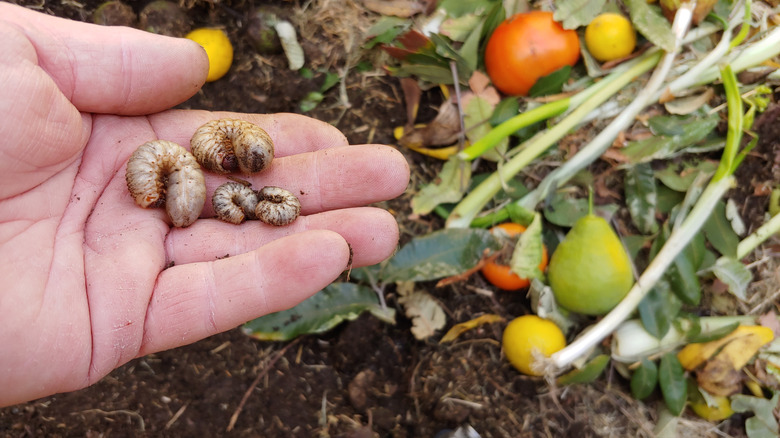Use Toilet Paper Rolls To Keep Cutworms Off Of Your Plants & Thank Us Later
Cutworms, the larvae of small brown or tan moths with bands, are notorious for the harm they inflict on various plants, including grasses, herbs, fruits, vegetables, ornamentals, and even weeds. Their name "cutworm" is derived from their destructive behavior of gnawing through the stems of young plants, causing them to fall over at the soil level. Such an attack can result in stunted growth, wilting, or in severe cases, the plant's demise. Moreover, they can feast on underground stems and roots, leading to further wilting. Their peak activity occurs during the spring.
To safeguard plants from these pests, an effective strategy is the use of protective collars, such as toilet paper rolls. These can also be created from other various materials, including plastic, cardboard, or repurposed drink bottles. However, using toilet paper rolls is a particularly easy and simple form of protection. Installed around the plant's stem, these collars should penetrate at least 1 inch into the soil and stand 2 inches above it, acting as a deterrent for cutworms. While cutworms pose a considerable challenge, their detrimental impact can be substantially reduced with vigilant identification and preventive measures. Simple barriers, like toilet paper roll collars, can shield plants from these pests.
How to use a toilet paper roll to keep away cutworms
Protecting plants from cutworms can be both simple and eco-friendly using a household item — the toilet paper roll. First, start saving your used toilet paper rolls. Once you have a few collected, slice them into 2 inch-tall sections, as shown by @aprilsunrisefarm on TikTok. Dig a small trench around the base of your plant. Open the sliced toilet paper roll and encircle the plant's stem with it, ensuring a portion is submerged in the soil.
Cutworms, primarily nocturnal pests, often target young plants. The toilet paper roll acts as a shield, creating a barrier that stops these pests from accessing and damaging the stem. This collar impedes the cutworms from encircling and severing the stem and is a green alternative to chemical solutions. It negates the need for potentially harmful pesticides, ensuring safety for both the environment and your plants. Moreover, it's a creative way to recycle and reduce waste, giving used toilet paper rolls a second life. Overall, using toilet paper rolls as protective collars is an efficient, cost-effective, and sustainable method to combat cutworm threats, promoting the robust growth of your plants.
